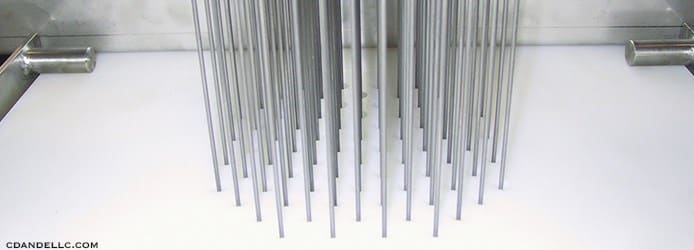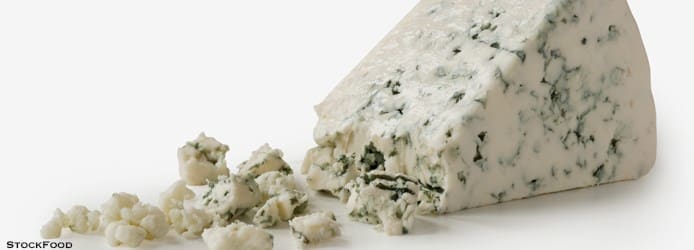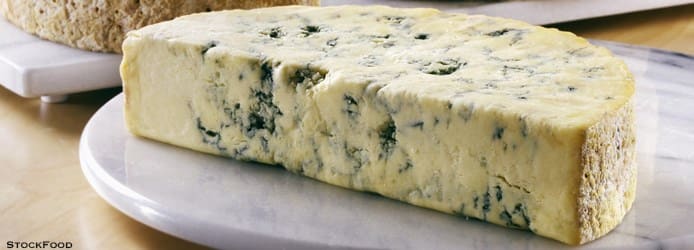During the ageing process the cheese is pierced with long needles to allow air to enter and form mould, which results in the blue veins. Blue cheese is typically produced in temperature-controlled environments, such as caves or cellars.
The 'stinky' smell of blue cheese is attributed to a family of moulds known as bacterium Brevibacterium linens, the bacteria most often identified with the odour of 'smelly feet'.
Legend has it that the first blue cheese was discovered by accident near Roquefort, France, when a shepherd was in a cave snacking on cheese made from sheep’s milk. The story goes that he abandoned his meal after spying a beautiful maiden outside. When he came back months later, the cheese was shot through with the now emblematic blue-cheese penicillin mould.
Modern science has since debunked this myth and attributes the marriage of cheese and mould to the penicillin present in some rye and rye flours. But whether you choose to believe the randy herder origin story or the less ribald rye version, the breadth of blue cheese flavours won’t disappoint.
Blue Cheese: 10 European Varieties Worth Trying
Aura
This cow's milk blue cheese hails from Finland where it is commonly enjoyed with rye crackers.
Bleu d' Auvergne
One of the most well-known blue cheeses in the world, the blue d'Auvergne derives its name from the Southern French town where it is produced. It is less pungent than other blue cheeses and its veins range from blue-green to blackish blue.
Danablu












